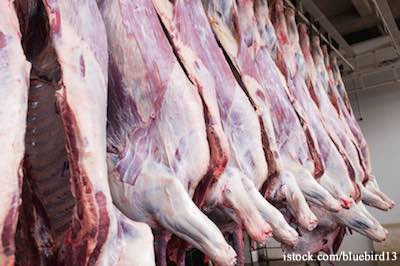Europe’s meat and poultry inspection methods don’t do enough to address the threat of foodborne illness and should be modernized, according to The European Food Safety Authority (EFSA). The EFSA’s scientific opinion, published June 29, is part of a response to European Commission’s May 2010 request that the organization investigate the correlation between meat inspection and public health.
 The EFSA was asked to identify and rank the main public health risks associated with the current inspection system and pinpointed Campylobacter,Salmonella, and β-lactamase bacteria as primary targets. In an analysis of foodborne illness outbreaks among the 27 European Union members, EFSA found that Salmonella and Campylobacter were were often detected in fresh broiler meat. In 2010, 99,020 cases of human Salmonella infection and 212,064 cases of human Campylobacter infection were reported during 2010. “Current inspection methods do not enable the detection of these hazards and, more broadly, do not differentiate food safety concerns from considerations related to meat quality, prevention of animal diseases or occupational hazards,” the EFSA said in a statement.
The EFSA was asked to identify and rank the main public health risks associated with the current inspection system and pinpointed Campylobacter,Salmonella, and β-lactamase bacteria as primary targets. In an analysis of foodborne illness outbreaks among the 27 European Union members, EFSA found that Salmonella and Campylobacter were were often detected in fresh broiler meat. In 2010, 99,020 cases of human Salmonella infection and 212,064 cases of human Campylobacter infection were reported during 2010. “Current inspection methods do not enable the detection of these hazards and, more broadly, do not differentiate food safety concerns from considerations related to meat quality, prevention of animal diseases or occupational hazards,” the EFSA said in a statement.
Reducing the incidence of foodborne illness from these bacteria will come from improved use of information between farms and slaughterhouses which will also improve the process of identifying animal health and welfare concerns, EFSA says. The group’s recommends creating a comprehensive food safety assurance system that includes clear targets for slaughterhouse and farmers, using controls to reduce bacterial levels and collecting and analyzing information from farms and slaughterhouses to identify risks.




